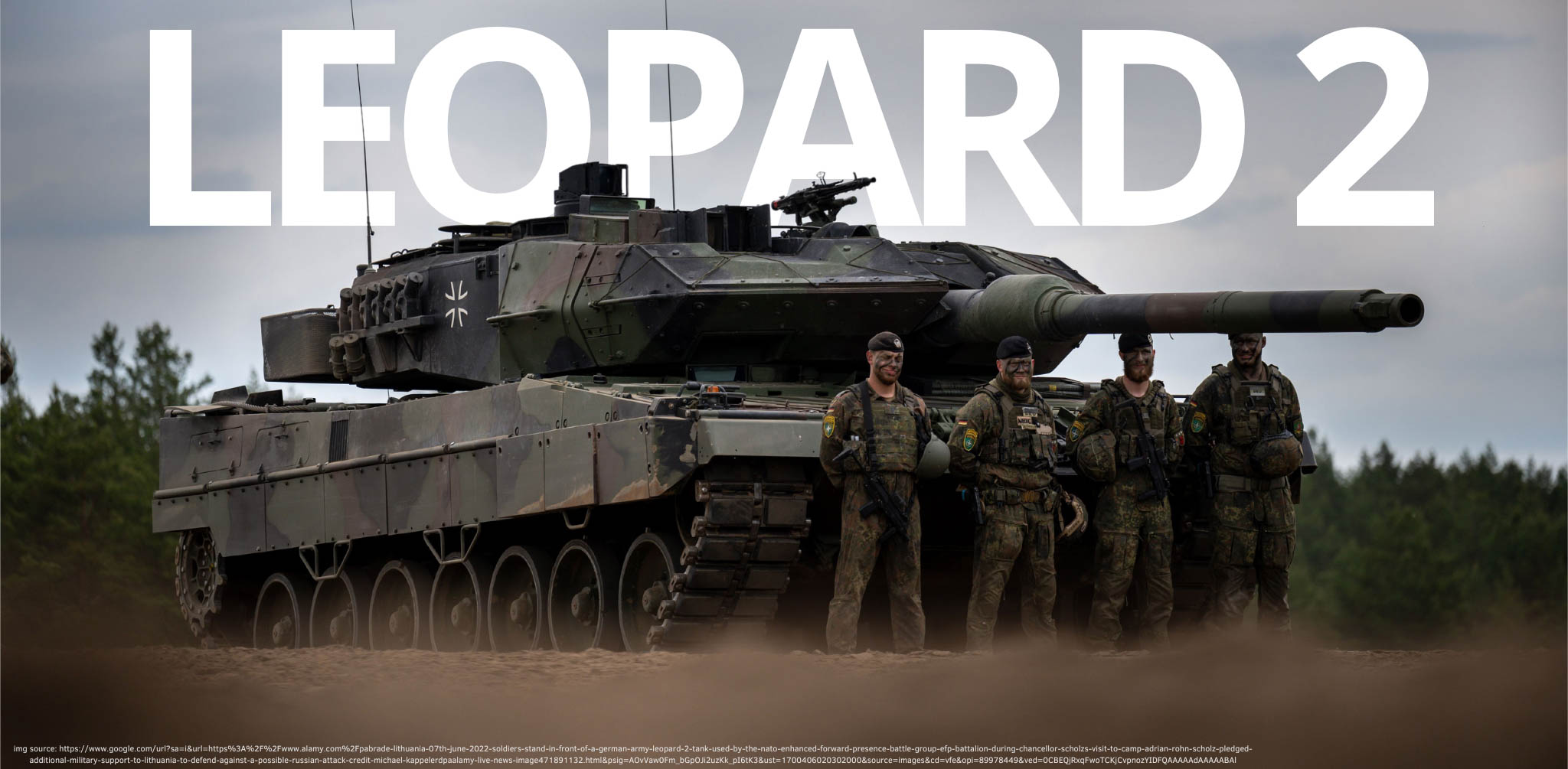

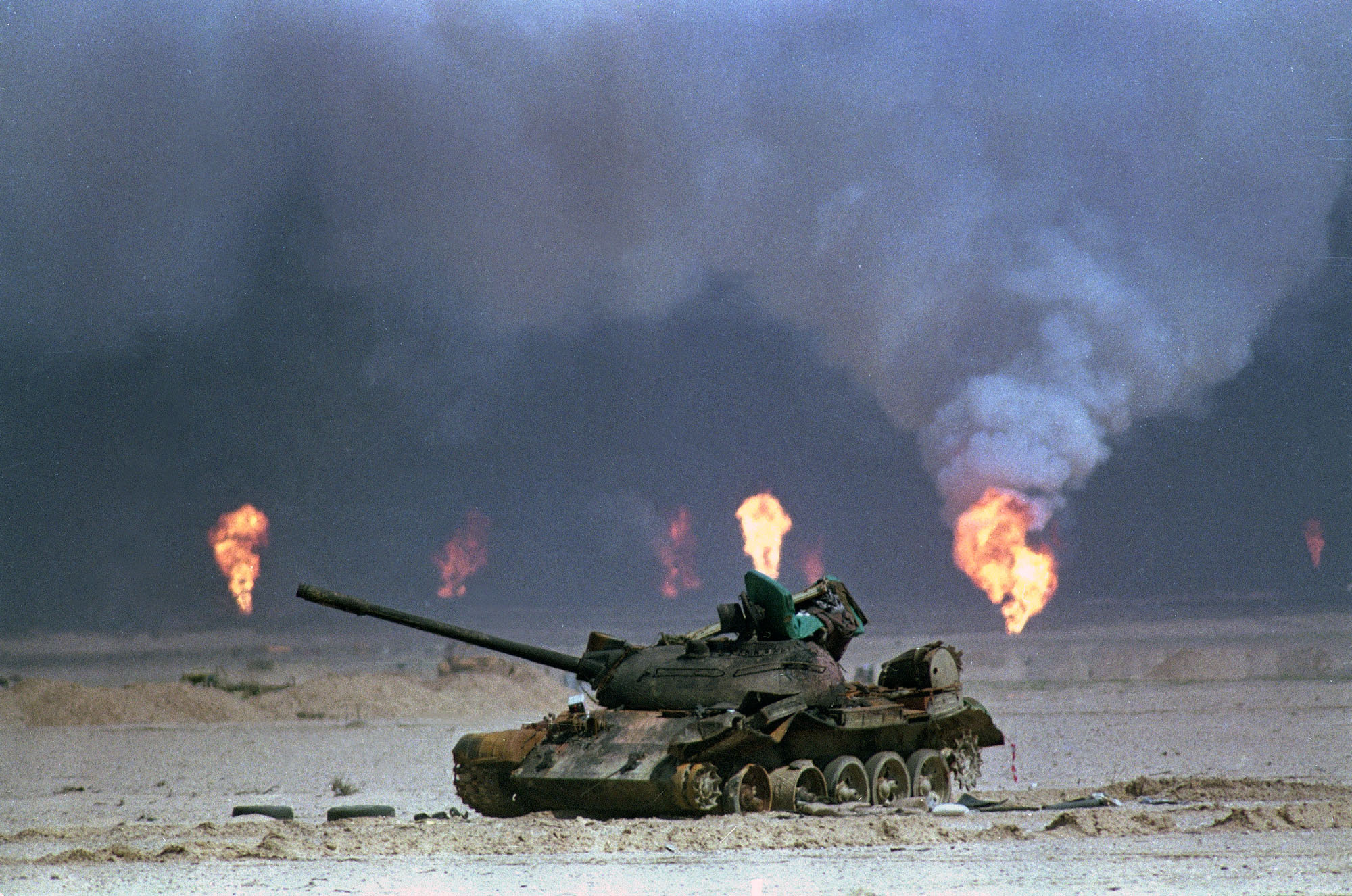
During the Gulf War in 1990-1991, Germany didn't engage its Leopard 2 tanks in direct combat. Instead, they were deployed to Turkey, not Iraq. The German government sent a small number of Leopard 2 tanks primarily as a symbolic show of support for NATO allies involved in the conflict, especially Turkey, which had concerns regarding its security due to the proximity of the war in Iraq.
The Leopard 2 tanks in this context were stationed as a deterrent along the Turkish border with Iraq, but they weren't involved in active combat operations. Germany maintained a non-combatant role in the Gulf War, and the Leopard 2 tanks were not used in actual military engagements during that conflict.
While the Leopard 2 tanks were present in the region, their role was more of a defensive measure rather than engaging directly in the conflict in Iraq.

During the Balkan Wars in the 1990s, the Leopard 2 tanks were employed by several NATO member countries, including Germany and the Netherlands, as part of peacekeeping efforts in the Balkans. These conflicts, particularly in the former Yugoslavia, involved complex ethnic and political tensions, leading to the intervention of international forces to maintain peace and stability in the region.
The Leopard 2 tanks were part of these multinational peacekeeping missions, aimed at preventing further escalation of the conflicts, protecting civilians, and supporting the implementation of peace agreements. Their role primarily revolved around providing a deterrent against potential aggression and maintaining stability rather than engaging in offensive operations.
Their presence in the region, alongside other military assets, was instrumental in supporting peacekeeping efforts. Their deployment symbolized the commitment of NATO and allied nations to ensuring peace and stability in a region plagued by conflict. However, it's essential to note that their involvement was largely centered on deterring further violence and contributing to the overall peacekeeping strategy rather than direct combat engagements.
The participation of Leopard 2 tanks in the Balkan Wars served as an illustration of the international community's efforts to restore and maintain peace in a volatile region, utilizing military assets not for offensive actions but as a stabilizing force aimed at preventing further hostilities.
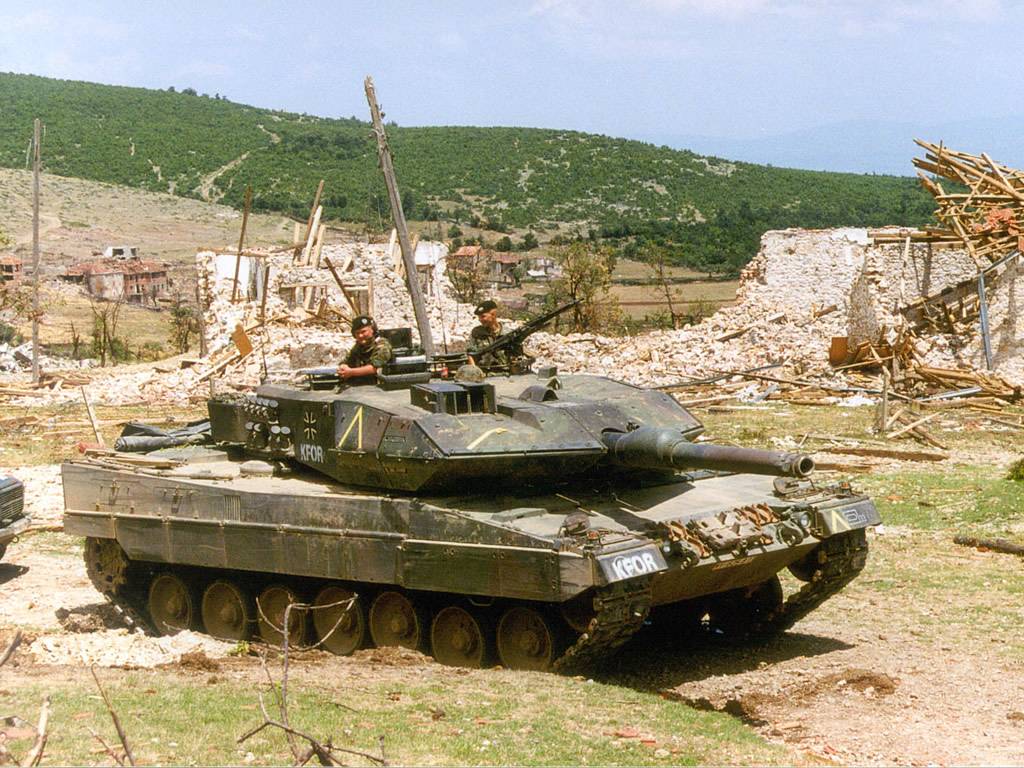
During the Kosovo War in the late 1990s, Leopard 2 tanks were part of the involvement of some NATO forces in the conflict. Germany, which deployed the Leopard 2 tanks, played a role within the context of NATO's operations during the conflict in Kosovo.
The specific use of Leopard 2 tanks during the Kosovo War involved their deployment as a part of the peacekeeping and stabilization efforts in the region. NATO forces, including those operating Leopard 2 tanks, were engaged in activities to enforce peace agreements, provide security, and prevent further hostilities and violence.
The Leopard 2 tanks in this conflict were used to support NATO's mission, primarily focused on maintaining peace, stability, and security in the region. Their role revolved around deterrence, maintaining a visible presence to discourage potential aggressors, and providing support to peacekeeping operations. However, their deployment during the Kosovo War didn’t involve direct combat engagements, as their primary function was to contribute to the peacekeeping efforts and act as a stabilizing force in the region.
The involvement of Leopard 2 tanks during the Kosovo War once again highlighted the role of advanced military assets in supporting peacekeeping missions, underlining NATO's commitment to preventing further conflicts and restoring stability in a region torn by violence and political unrest.
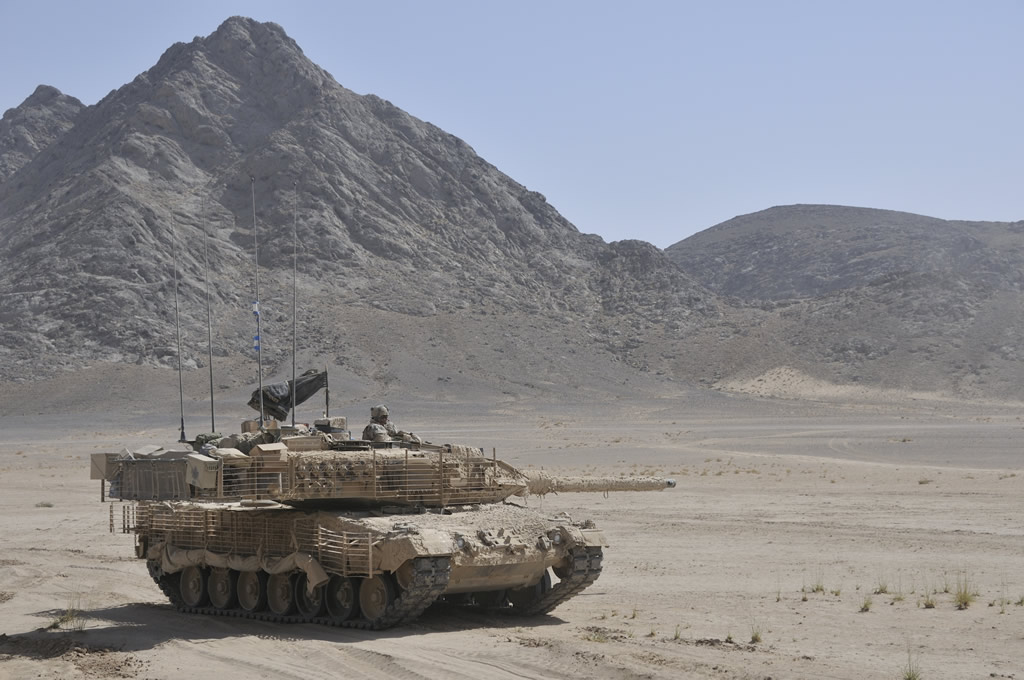
Leopard 2 tanks were employed in Afghanistan as part of the international coalition's efforts in the War on Terror, which began in 2001 following the September 11 attacks in the United States. Several NATO member countries, including Canada, Denmark, and the Netherlands, deployed their Leopard 2 tanks to the region during the conflict in Afghanistan.
The primary role of Leopard 2 tanks in Afghanistan was to provide support and protection for coalition forces involved in the broader mission of stabilizing the country, combating insurgent groups like the Taliban, and supporting the Afghan government. These tanks, with their advanced armor and firepower, played a crucial part in enhancing the security and mobility of coalition forces operating in a challenging and hostile environment.
Leopard 2 tanks were particularly valuable in the rugged terrain of Afghanistan, where their high mobility and potent firepower made them effective tools for both offense and defense. They were used in various roles, including convoy protection, patrolling, and, when necessary, engaging insurgent positions. The tanks also served as a visible deterrent, showcasing the commitment of NATO forces to maintaining security in the region.

The deployment of Leopard 2 tanks in Afghanistan was not without challenges. The difficult terrain, including mountainous regions and rough terrain, required skilled crews to operate these tanks effectively. Additionally, the tanks had to contend with the threat of improvised explosive devices (IEDs) and ambushes by insurgent forces.
While Leopard 2 tanks were valuable assets in enhancing the security and capabilities of coalition forces, it's important to note that their use was mainly within the context of counterinsurgency operations, peacekeeping, and stabilization efforts. They played a key role in supporting the broader objectives of the international community in Afghanistan, with the primary focus being on maintaining security and stability in the country rather than waging large-scale armored warfare.
The involvement of Leopard 2 tanks in Afghanistan highlighted their adaptability and versatility in different operational environments and their ability to contribute to the mission's success. It also underscored the broader challenges faced by coalition forces in dealing with asymmetric warfare and insurgent tactics.
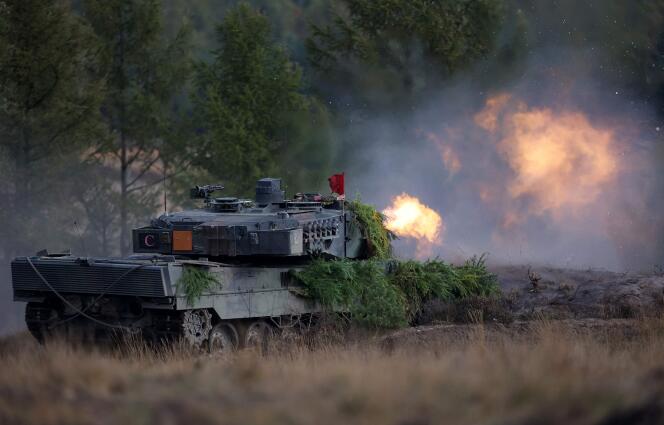
During the Iraq War that began in 2003, the involvement of Leopard 2 tanks was multifaceted. While Germany, the primary operator of the Leopard 2, didn't engage these tanks in direct combat in Iraq, other nations within the coalition employed their Leopard 2 tanks in various capacities during the conflict.
Countries like the Netherlands and Denmark, which had acquired the Leopard 2, deployed these tanks in support of coalition forces in Iraq. Their primary roles included providing security, supporting ground operations, and enhancing the capabilities of coalition troops in a challenging and dynamic operational environment.
Leopard 2 tanks were instrumental in their ability to navigate the diverse landscapes of Iraq, ranging from urban areas to open deserts. They were utilized for tasks such as convoy protection, securing key locations, and serving as a deterrent against potential threats.
While the Leopard 2 tanks in Iraq weren't engaged in widespread tank battles or large-scale conventional warfare, their presence significantly contributed to the overall capabilities and security of coalition forces. They operated in a role more aligned with providing armored support, deterring potential threats, and enhancing the defensive capabilities of coalition troops.
The participation of Leopard 2 tanks in the Iraq War underscored their adaptability and effectiveness in diverse operational environments, emphasizing their value in supporting coalition forces and their mission in a complex and challenging theater of conflict.

The Syrian Civil War, which began in 2011, saw the involvement of the Leopard 2 tanks primarily through Turkey's deployment along its border with Syria. Turkey, a NATO member and a user of Leopard 2 tanks, positioned these armored vehicles as part of its defensive strategy along the Syrian border.
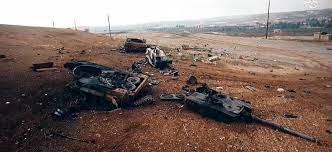
The deployment of Leopard 2 tanks by Turkey in this context aimed to enhance border security, deter potential threats, and protect against possible spillover of conflict from the Syrian Civil War. These tanks played a significant role in bolstering Turkey's defensive capabilities, particularly in regions where tensions were high due to the proximity of the conflict in Syria.
While the specifics of the Leopard 2's involvement in the Syrian Civil War itself might be limited, their deployment along the Turkish-Syrian border served as a visible deterrent against potential hostilities and contributed to Turkey's defensive posture in the region.
The presence of Leopard 2 tanks in this conflict was more focused on border security and deterrence rather than direct involvement in the internal conflict within Syria. It showcased the role of advanced military assets in supporting defensive strategies and deterring potential threats, emphasizing the significance of armored capabilities in maintaining border security and stability in the face of regional conflicts.

The involvement of Leopard 2 tanks in internal conflicts across various regions has been relatively discreet and not as extensively documented compared to their participation in larger, more widely recognized conflicts. However, there have been instances where nations utilizing Leopard 2 tanks have employed them in internal conflicts or operations aimed at addressing domestic unrest or insurgencies.
These internal conflicts often involve complex political, social, or ethnic dynamics, and the utilization of Leopard 2 tanks in such scenarios is generally focused on supporting government forces to restore order, counter insurgencies, or maintain stability within the country.
The specifics of Leopard 2 involvement in internal conflicts might vary significantly based on the context of the situation and the country employing these tanks. They are often used in roles such as urban pacification, securing key infrastructure, or supporting government forces in restoring law and order.
However, due to the sensitive nature of internal conflicts and the often limited public information available, the detailed involvement of Leopard 2 tanks in these scenarios might not be extensively documented or publicly disclosed.
In such instances, the use of Leopard 2 tanks might be part of the broader military efforts by governments to address internal unrest or insurgencies, with a primary focus on restoring stability and protecting key assets or territories.
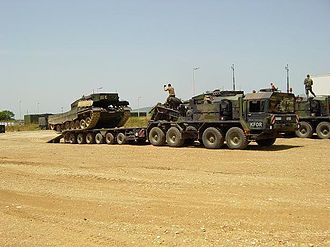
Starting on 12 June 1999, 28 Leopard 2A5 tanks were deployed to Kosovo by the German Army as part of the Kosovo Force (KFOR). The vehicles of Panzerbataillon 33 and 214 were sent from Macedonia to Prizren. They were used for patrols, protecting checkpoints and bases as well as part of the show of force. On 13 June 1999, two members of the Serbian paramilitary started firing from inside a Fiat 125p car at one of the checkpoints in Prizren and both were killed by return fire. A Leopard 2A5 was located at the checkpoint, but it could not participate in the fighting as it was only partially crewed.
On 26 June 1999, a Leopard 2A5 fired four warning shots above the town of Orahovac. From late 2000 to early 2001, the tanks were replaced by the Leopard 2A4 model. Leopard 2A4s were deployed to Macedonia in 2001 as part of the NATO intervention. The tanks served to protect Bundeswehr logistic sites in Macedonia. Until their return in 2004, the Leopard 2 tanks were stationed at the Austrian-Swiss camp "Casablanca".
The Dutch contingent in Bosnia-Herzegovina operated Leopard 2 tanks. Dutch Leopard 2A4s and Leopard 2A5s were stationed at the NLD bases at Bugojno, Novi Travnik, Sisava, Knezevo, Maslovare and Suica.
In October 2003, Canada was planning to replace its Leopard C2s with wheeled Stryker Mobile Gun Systems. However, operational experience in Afghanistan and in particular during Operation Medusa, convinced the Canadian military of the usefulness of maintaining a tank fleet.Leopard C2s were deployed to Kandahar in December 2006, but they were by then almost 30 years old, and were nearing the end of their operational life. The Canadian government decided to borrow 20 Leopard 2A6s and three armoured recovery vehicles from Germany for rapid deployment to Afghanistan. In late August 2007, the first Leopard 2s were airlifted into Afghanistan to equip Lord Strathcona's Horse (Royal Canadians).
In an assault on 2 November 2007, a Leopard 2A6M hit an improvised explosive device (IED) and survived without casualties: "My crew stumbled upon an IED (improvised explosive device) and made history as the first (crew) to test the (Leopard 2A6) M-packet. It worked as it should." wrote a Canadian officer in an email to German defence officials. Canadian Chief of the Defence Staff General Rick Hillier denied reports that a Leopard 2 tank that was struck by an IED was a write-off, insisting that the tank has been repaired and is once again in use. "The Taliban have been engaged with some of the new Leopard 2 tanks in several ambushes" and that as a result the Taliban "learned some very harsh lessons" and lost the battle in question "very quickly and very violently."
In October 2007, Denmark deployed Leopard 2A5 DKs in support of operations in southern Afghanistan. The Danish tank unit, drawn from the first battalion of the Jydske Dragonregiment (Jutland Dragoons Regiment), was equipped with three tanks and one M113 armored personnel carrier, with an armoured recovery vehicle and another tank kept in reserve. The Danish version of the Leopard 2A5 is fitted with Swedish-made Barracuda camouflage mats that limit the absorption of solar heat, thus reducing infrared signature and interior temperature. It also has a conventional driver's seat bolted on the floor of the tank, whereas in the Canadian 2A6M (as part of the mine-protection package) the driver's seat has been replaced by a "dynamic safety seat", which is a parachute-harness like arrangement that the driver wears around his hip. This way, the driver does not have any contact with the hull except on the pedals and is out of the shockwave area of exploding land mines or IEDs.
In January 2008, Danish tanks halted a flanking manoeuvre by Taliban forces near the Helmand River by providing gunfire in support of Danish and British infantry from elevated positions. On 26 February 2008, a Danish Leopard 2 was hit by an explosive device, damaging one track. No one was injured and the tank returned to camp on its own for repairs. The first fatality suffered by a crew operating a Leopard 2 happened on 25 July 2008. A Danish Leopard 2A5 hit an IED in Helmand Province. The vehicle was able to continue 200 metres (656 ft) before it halted. Three members of the four-man crew were able to escape even though wounded, but the driver was stuck inside. Onsite treatment by Danish medics could not save him. The vehicle was towed to Forward Operating Base (FOB) Attal and then later to FOB Armadillo for investigation and possible redeployment. During the same contact with Taliban forces, a second tank was caught in an explosion but none of the crew were wounded.
Beginning on 7 December 2008, Leopard 2 tanks took part in Operation Red Dagger, firing 31 rounds in support of Coalition troops as they recaptured Nad Ali District. A press release from the British Ministry of Defence praised the tank's fire accuracy and mobility, claiming the Leopard 2 was a decisive factor in the coalition's success.
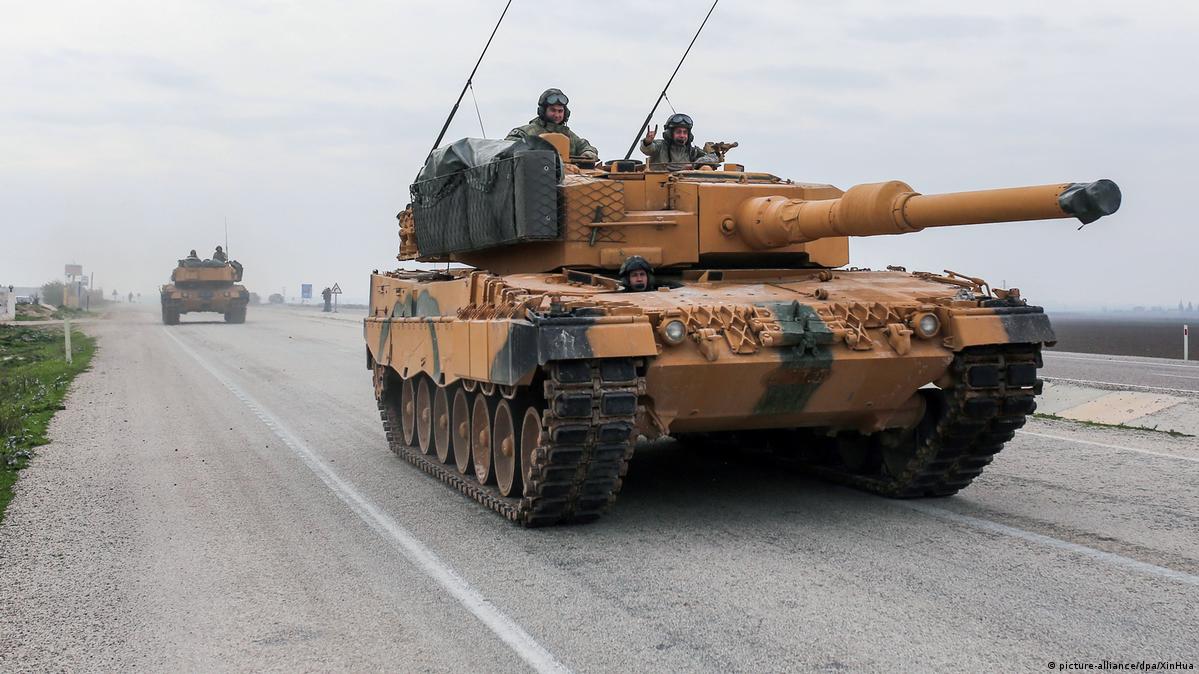
Turkey operates 354 Leopard 2A4 tanks. Initially using other tank types including upgraded M60s, in December 2016 Turkey deployed a number of Leopard 2A4s to the Syrian Civil War against Islamic State of Iraq and the Levant (ISIS) as part of Operation Euphrates Shield. Initially, three of the Turkish Leopard 2A4s operating in Syria were destroyed or damaged by ISIS using anti-tank missile systems (possibly Fagot or Konkurs anti-tank guided missiles obtained from Syrian or Iraqi Army captured stocks). In mid-December 2016, two 2A4 tanks were captured by ISIS near al-Bab city in Syria during Euphrates Shield operations. Amaq News Agency posted video of vehicles claimed to be captured Leopard 2A4s.
By late December 2016, ISIS had captured or incapacitated 10 Leopard 2A4s. These were damaged by anti-tank weapons, IEDs, or other unknown causes. Additional ISIS propaganda images and video depicting several completely destroyed Leopards, some with their turrets blown off, were published in January 2017. Tanks which suffered the worst damage may have been destroyed by airstrikes in order to prevent capture but sources generally state that the damage was caused solely with anti-tank missiles or car bombs driven by suicide bombers.
In January 2017, the German newspaper Die Welt reported that ISIL fighters used 9M133 Kornet anti-tank missiles to destroy six Leopard 2 tanks used by the Turkish military in Syria.

At least eight Leopard 2 MBT have been destroyed according to photographic reports.
Turkey also confirmed the use of Leopard 2A4 tanks during the Turkish military operation in Afrin to the German government. These tanks were designed during the Cold War to fight against Soviet tanks in Europe, not counterinsurgencies against guerrillas, where the primary risk is improvised explosive devices and anti-tank missiles. These tanks were retired from German usage when sold to Turkey.
There is a belief that the Turkish purchase of Leopard 2A4s from Germany was subject to the condition that they were not to be used against Kurdish separatists. Prior to 2016, the Leopard 2A4s were kept in northern Turkey. Once the German government discovered that the Leopard tanks were being used against Kurdish forces, planned upgrades to make them “less vulnerable to explosives” were halted. Ultimately Turkey was forced to upgrade the Leopard 2A4s with domestic components, including a possible replacement of the original turret with that of the Turkish Altay main battle tank.
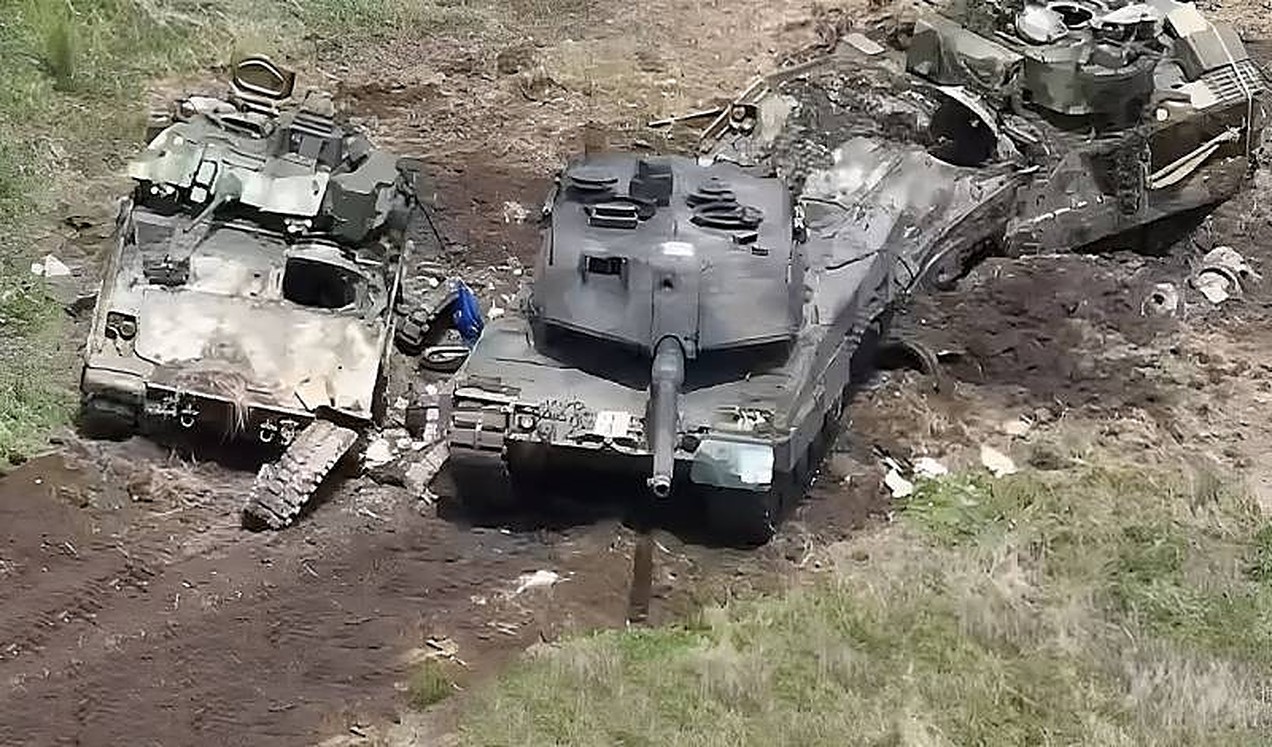
In April 2023, during training of a Ukrainian crew a Leopard 2A4 was damaged with its turret being completely dislodged from the hull. The crew was reported as fine. In July 2023, a Leopard 2A4 was modified to carry Kontakt-1 ERA on the sides of the hull and the turret. It was also shown with rubber screens attached to the turret and gun mantel.
Beginning in June 2023, Ukraine deployed Leopard 2s during the Russo-Ukrainian War against Russia in preparation for their 2023 counteroffensive. During Ukrainian attacks in Zaporizhzhia Oblast on 8 June 2023, a Russian artillery strike on a Ukrainian vehicle column at Novopokrovka destroyed at least one Leopard 2A4 tank. Additionally, more Russian drone footage from the same day and days after showed 4 Leopard 2A6 tanks and 3 Leopard 2Rs damaged or destroyed south the road of Mala Tokmachka.
On 28 August 2023, Russia's Defense Minister Sergey Shoigu claimed that Russian forces had destroyed or damaged all 16 Leopard 2A4 tanks supplied to Ukraine by Poland and Portugal.
As of 6 November 2023, according to the Oryx blog, at least twelve Ukrainian Leopard 2s were destroyed according to photos and videos (3 Leopard 2A6, 2 Leopard 2A4, 5 Leopard 2A4V, 1 Leopard 2R, 1 Bergepanzer-3); While another 16 Ukrainian Leopard 2s of various models were confirmed damaged to various degrees, with seven of them being classified as abandoned by their crews: 4 Leopard 2A4, 7 Leopard 2A6 with 4 of them being abandoned, 3 Stridsvagn 122 that are also abandoned, 2 Leopard 2R. Totally, at least 18 Leopard-2 were total write-off and 9 more were damaged. The Oryx's list only includes destroyed or damaged equipment of which photo or videographic evidence is available, thus the amount of equipment lost could be higher than Oryx documented.
On 4 October 2023, according to Forbes, Ukrainian forces managed to recover at least one Strv 122 and have sent it to be repaired.